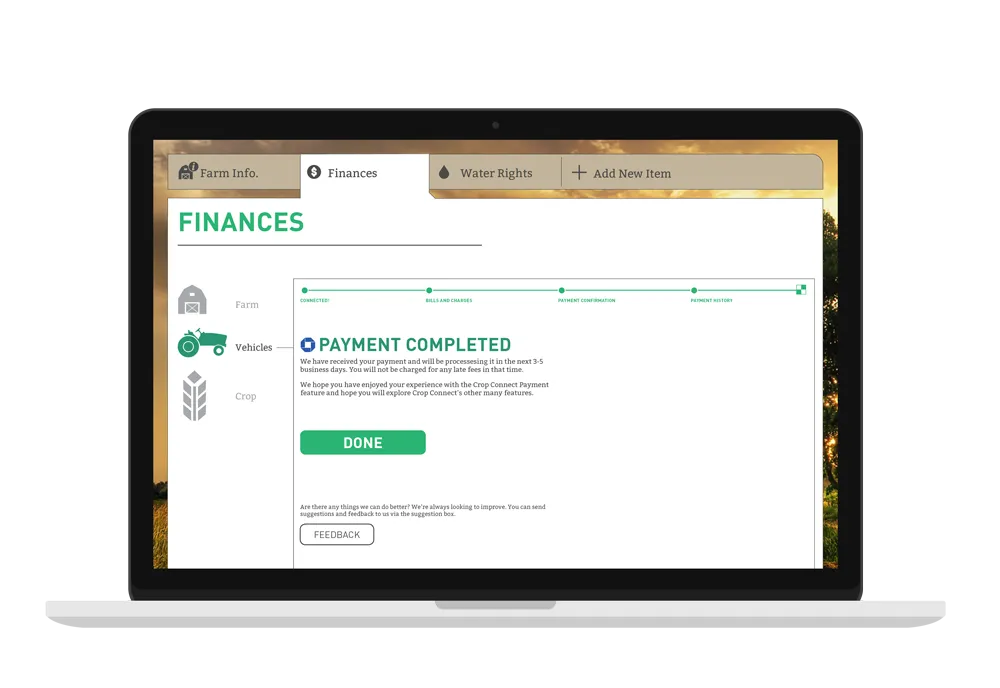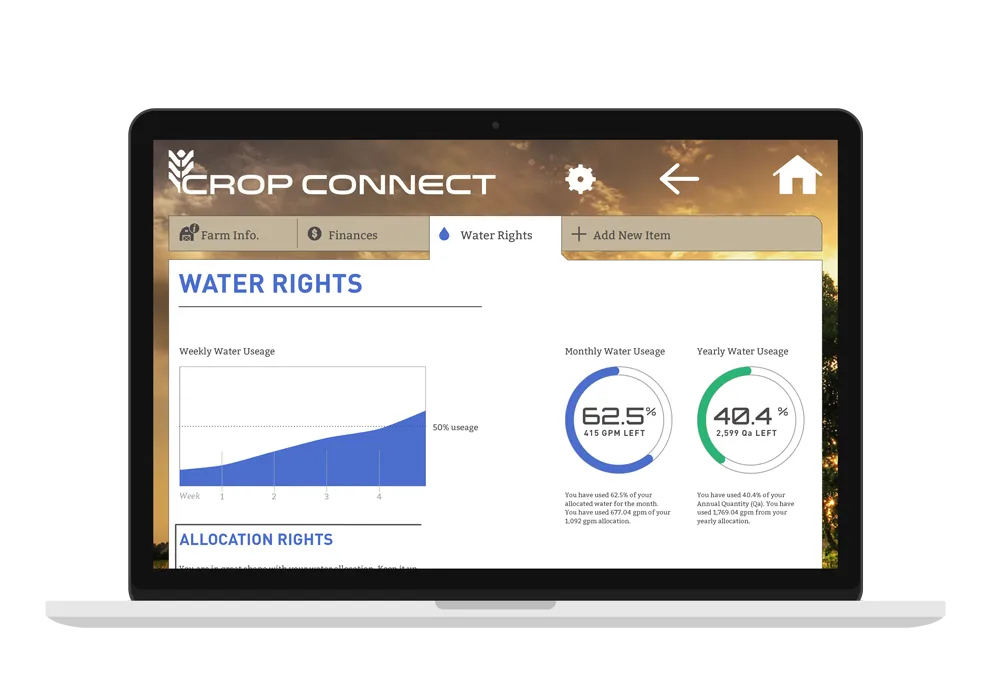Background
Farmers are increasingly reliant on technology for bigger yields and tracking data sets. Farming is competitive, especially in Eastern Idaho, which is very rural. So, any advantage is paramount.
Objectives
Our primary goal was to develop an intuitive interface empowering farmers to manage their operations effectively, regardless of their technological expertise.
To gain a deeper understanding of the farming equipment and its digital capabilities, I visited a local John Deere store. I interviewed a salesperson, asking numerous questions about the role of a tractor on a farm, its capabilities, and features that would enable it to be digitally effective.
The user research phase is always interesting, providing valuable insights into the application’s core capabilities. The salesperson’s knowledge about the tractors, including the GPS feature, was particularly enlightening. While I had imagined the tractor operating autonomously in the field, he told me about the challenges, such as terrain bumps, that make this level of autonomy a faraway reality.
Challenges
The biggest challenge was my need for more exposure and experience with anything farm-related. I was starting at quite the deficit.
The other big challenge was making the application easy to use and bright enough for a Farmer to read what was on the screen in sunlight. I imagined Farmers would use it in the field and at home.
Solutions
Since this application was an exercise rather than an actual application, I designed only a couple of screens to act as a starting point for conversation. I created screens based on a farm’s finances and water rights in my limited time.
I knew I wanted the farmer to be able to see the screens inside and outside. I learned the way to accomplish this was through contrast.
For the finance piece, a farm is expensive, and a growing farming business needs more vehicles. These vehicles may require financing and integration with the Farmer’s Bank.
Water rights came up during user research. I discovered that water rights are a hotly contested topic among the farming community because if you don’t have enough water, you don’t have a big enough yield. If your yield isn’t big enough, you may be unable to cover all your expenses for the season, including things like buying seed for next season.
These were the two screens on which I decided to focus my time.
Results
The first screen focuses on connecting your bank account to the application and making your first payment towards your financed vehicle.

The second screen focuses on water rights. It gives you a window into your usage for the month and the year. Water rights are actually a part of Agricultural Law, so being able to track them is a vital piece of farming. I found that rural water systems mostly consist of irrigation ditches, gravity-based canals, and pipelines. So, if you’re using too much water, the farmer downstream from you may not get their full share.

Lessons Learned
- GPS-based farming equipment is a cutting-edge technology, that enables farmers to more accurately and efficently plow their fields.
- Water Rights are important to farmers.
- High Contrast in color provides bright enough content that it can be seen in direct sunlight as well as inside of a house.